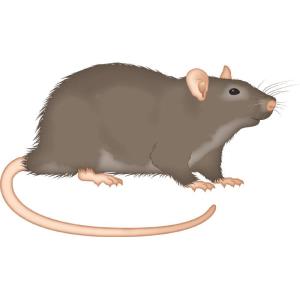Ask the Expert - Rodent control
Rodents are considered one of the most successful mammals due to their close association with humans and are now believed to outnumber them. They are fantastic for a host of physiological, toxicological, behavioural and other scientific research uses.

Rodents destroy infrastructure by gnawing and damage everything from structures and wiring to data cables - even passenger jets have been grounded by rodents.
They are one of the most significant pests we face daily. Establishing procedures for dealing with rodents is critical to getting results that are acceptable to both clients and your business.
Pest control operators must ensure that programs do not impact off-target wildlife but remain completely effective in rodent management. Keep skills current in order to constantly improve services and ensure that the best possible outcome is delivered.
Conducting an effective rodent baiting program
Not all rodents are the same – get to know your enemy
Rodents modify behaviours to fit their current environment. When food is freely available they can ignore new foods. Deny access to their regular food supply and they become food stressed, altering their behaviour.
A typical example is a rat population living around a school. Term time offers plenty of food but during the holidays, food suddenly dries up and rodents are forced to forage further afield. They readily take new food materials such as baits and you gain very rapid control.
If you can change their feeding pattern by reducing their access to a normal food supply, then you may be able to force them to change their behaviour and feed on your baits.
Sometimes you have to think laterally
A good case scenario was when a pest controller had to deal with a large infestation of Black Rats who were eating chocolates in a very large supermarket storage area. With hundreds of kilos of chocolate to feed on, rodent bait was completely ignored. Eventually, the problem was solved by taking a totally different approach.
Firstly, the pest controller modified the immediate environment to reduce as many available water sources as possible. At the time, it was very dry so water was scarce. Drink stations were then added to all of the bait stations and the rodents were allowed to investigate these changes. For 24 hours, the stations were treated with suspicion but eventually, the rodents moved in and consumed the bait. Excellent control was achieved rapidly.
Although drink stations may not be applied to solve all the scenarios a pest control operator may face, sometimes it is about taking a lateral approach to solve a situation. Rats are always suspicious but they are also extremely curious. Add something to bait stations like paper or other nesting materials and they will inevitably investigate the changes.
Bait according to rodent species
Looking for a roof rat – Look up!
When dealing with an infestation of Roof rats, “look up”! Roof rats originate from the forests of Southeast Asia and are most comfortable nesting and foraging above ground.
In commercial food storage environments, roof rats nest in the upper areas, climbing down to available food sources and then back to the nest without touching ground level.
This is especially true if an infestation of Norway rats is present. Norway rats are aggressive meat eaters and love to feed on roof rats. As a survival mechanism, the smaller roof rat avoids areas where the Norway rat is established.
Target those hard to reach areas
Roof rats are natives of the arboreal jungles of Southeast Asia and highly adapted to seeking shelter in trees and other off-ground vegetation. Always inspect the perimeter areas of the building thoroughly for signs of harbourages and ensure they are removed to limit the nesting areas for roof rats. Ensure any vegetation that touches the building is trimmed well back from the structure to limit the access points for roof rats to enter a building.
Place bait stations in the areas where roof rats will forage- not just on the ground. Try not to place bait stations in areas that are easy for to check during inspections but go the extra mile and set up the baits where it is best suited for rodent control.
